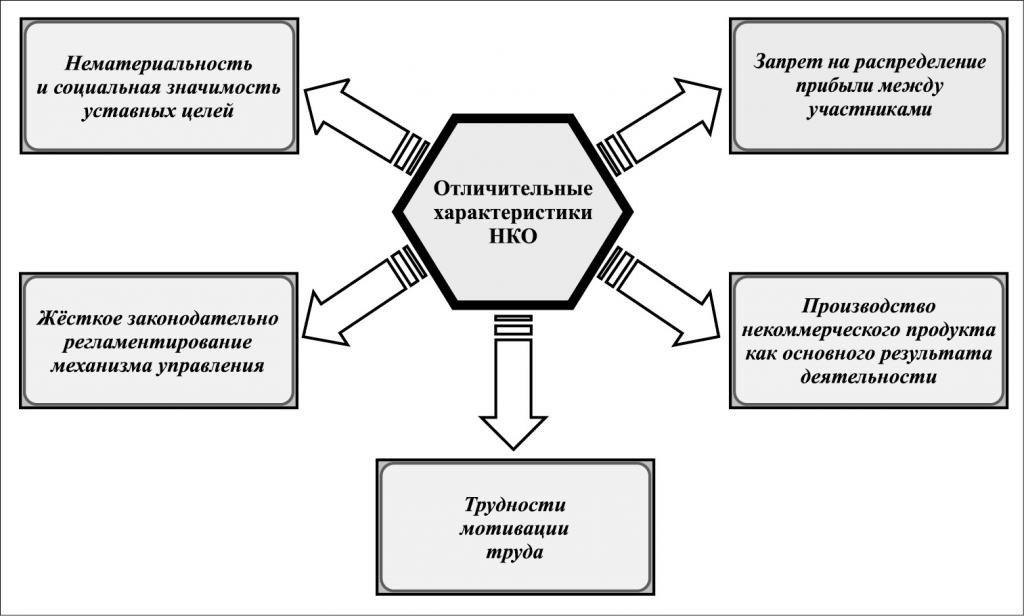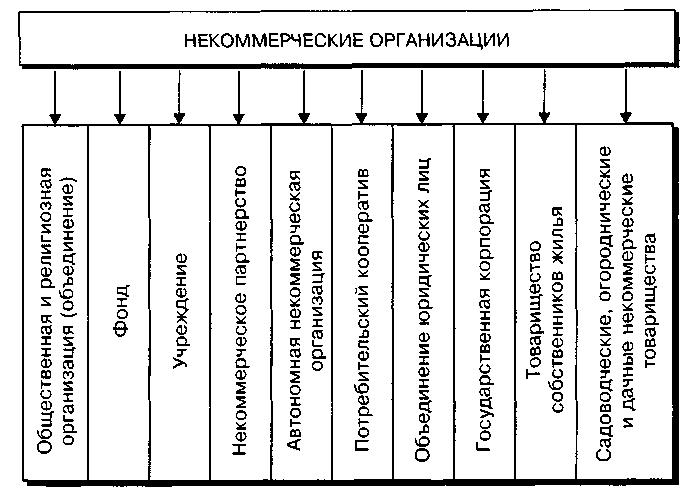As you know, all organizations in Russia can be divided into three sectors: state, commercial and non-profit. And if everything is clear with the first two species, the latter makes us think. What objects belong to non-profit organizations? We suggest that you reflect on this further.
Nonprofit organizations include ...
Definition first. A non-profit organization, a non-profit organization, is a structure that does not set as its main task profit making, and also does not distribute it among its participants.
The goals of creating NPOs are as follows:
- cultural;
- social;
- charity;
- scientific;
- educational;
- managerial;
- political;
- protecting the health of citizens;
- development of sports, physical education;
- satisfaction of intangible (spiritual) needs;
- protection of the legitimate interests of private and legal entities;
- legal assistance;
- other things useful to society.

Objects that relate to non-profit organizations have the right to engage in entrepreneurial activity. But only if it is aimed at achieving the main social goal.
It is important to note that non-profit organizations that perform certain functions of self-government bodies, states and at the same time do not resort to the help of these, are called non-governmental.
Characteristics of NPOs
In order to more clearly present the structures that are related to NPOs, we suggest that you familiarize yourself with the following characteristic:
- Founder: any person.
- Personnel: recruited staff and persons involved.
- Remuneration of participants: full-time employees - salaries, volunteers, volunteers are not paid, services of attracted persons - a contract for the provision of services.
- The main objectives of the activity: as a rule, socially significant.
- Sources of financing: state budget (but only if the founder of the organization is the state), borrowed capital, revenue from entrepreneurial activities (with a number of restrictions), investments and donations. Membership fees also apply. Moreover, the vast majority of NPOs exist at the expense of them, without resorting to the above sources. Grants are often used, including state ones. Also, a lot of NGOs distinguish them with their sole source of funding.

Types of NGOs
Nonprofit organizations include:
- Cooperatives: garage-building, consumer (credit, housing, agricultural, marketing, horticultural, procurement, livestock, gardening, processing).
- Unions
- Associations.
- Universities.
- Autonomous non-profit associations.
- State corporations.
- Charity organisations.
- State-owned companies.
- Cossack societies.
- Natural, national parks, reserves.
- Municipal and state budget, state and autonomous entities.
- Non-governmental associations.
- Non-commercial partnership.
- Homeowners Association, Civil Code, LCD.
- All kinds of social associations: political parties, public foundations, movements, organizations, trade unions, amateur foundations.
- Associations of legal entities.
- Mutual insurance companies.
- Unions of employers.
- Communities of small indigenous peoples.
- Religious association, group, organization.
- Country, gardening, garden non-profit association.
- Territorial public association.
- Chamber of Commerce and Industry.

Hybrid forms of NPOs
Speaking about which organizations are non-profit, it is important to note hybrid forms with commercial (private) structures. These include:
- Companies in the public interest (UK).
- Public Benefit Corporation (USA).
- Low-income limited liability company (USA).
- Public Benefits Corporation (Germany).
- Charity limited liability company (Germany).
NGOs in Russia
In Russia, the forms of non-profit organizations include more than 30 types of NPOs. Many of them have similar functions, and the differences are only in the names. All associations are regulated by the Civil Code of the Russian Federation (Chapter 4, paragraph 6), Federal Law "On Non-Profit Organizations". The specific activities of individual NPOs are controlled by relevant legislative acts.

We list some features of the activities of these organizations in the Russian Federation:
- Foreign grants received are not tax deductible.
- Since 2008, special grants have been allocated by the president to support NGOs.
- In 2015, the so-called registry of undesirable organizations was introduced. Any international or foreign NPO, which poses a threat to the Russian political system, can get there.
- In 2017, an order was issued ordering the granting of grants to those non-profit organizations that conduct socially significant, civic activities.
NPOs in our country are a fairly common type of associations, numbering more than a dozen forms. They are united by common goals, the combined characteristics of NPOs. In relation to such organizations, both general regulatory norms and specific ones apply.









